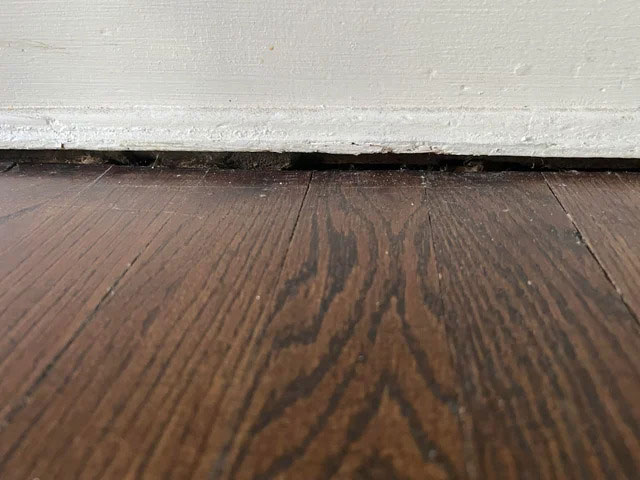Call Toll Free!
(866) 545 - 7753
If you see cracks form in the drywall of your home, this can be a sign of either a sagging floor structure or a settling foundation. That symptom by itself is not conclusive, and this can be frustrating for a homeowner wanting to know what’s wrong with their home.
A gradually sloping floor is one of those issues that can escape notice. When you are very familiar with something like your house, subtle changes can occur right under your nose (or toes, in this case).
But sometimes it’s obvious. You see a gap between the floor and the baseboard, or the floor has noticeable high and low points. These are symptoms that indicate a floor structure problem.


Maybe yours isn’t too bad or you’re not sure. Either way, you need a better test than just relying on the naked eye. Pick up a marble or a ball and choose one end of the room. With a small amount of pressure, roll the object away from you and watch. Ideally, it will roll smoothly and consistently across the floor.
If it rolls up and down like a tiny roller coaster, you probably have some bad floor joists.
Does it gain speed as it goes across? That’s a sloping floor. Sloping could be a damaged sill plate, band board, and/or joists.
If the ball reaches the center of the room, then slows and starts to roll back and forth in a hollowed spot? That’s most likely a sagging center beam.
But- and this is why this is tricky- if the ball doesn’t roll straight across the floor and instead turns and rolls to an outside wall, that could still be a foundation issue.